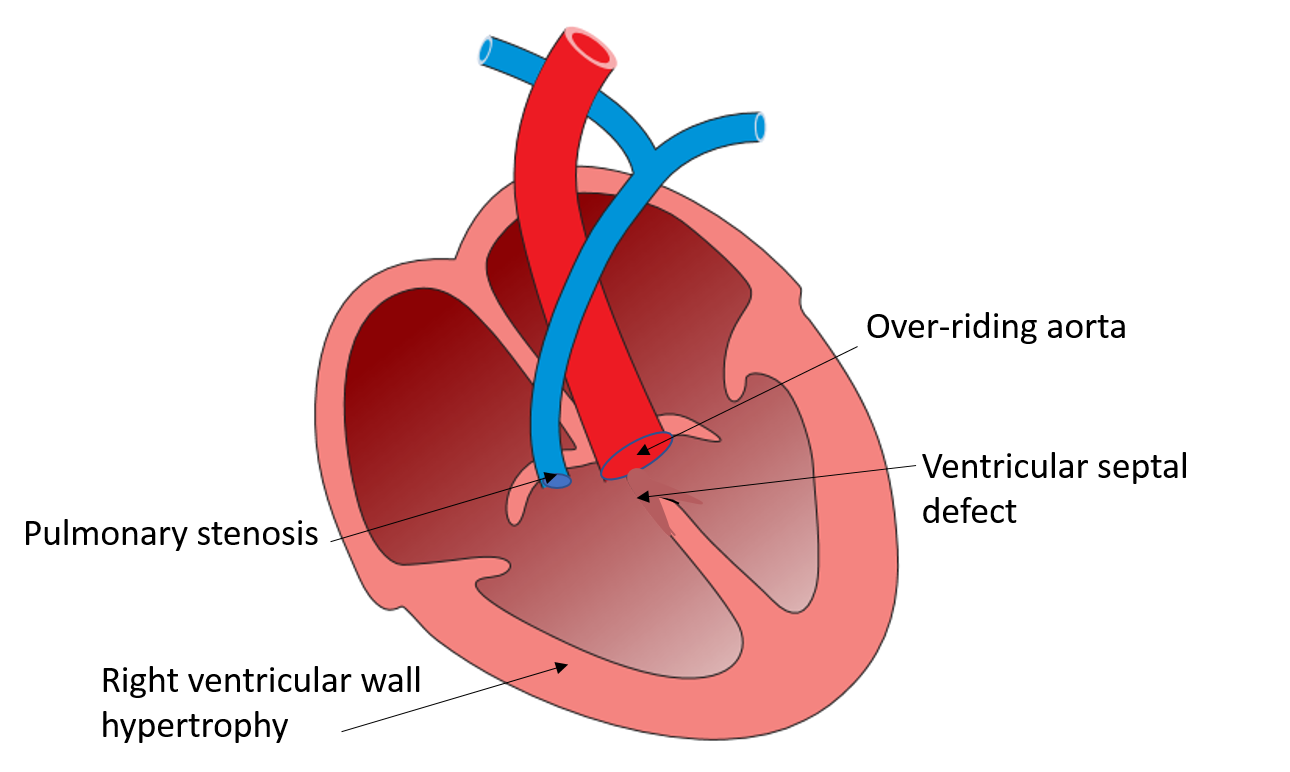What are the chambers of Heart?
Heart consists of four chambers
- Right atrium : Receives the impure blood from the body and the heart itself.
- Right ventricle: Receives the impure blood from the right atrium and outflows the blood into the pulmonary circulation through the pulmonary trunk.
- Left atrium : Receives oxygenated blood from the lungs via pulmonary veins.
- Left ventricle : Receives oxygenated blood from the left atrium and outflow the blood into the systemic circulation via aorta.
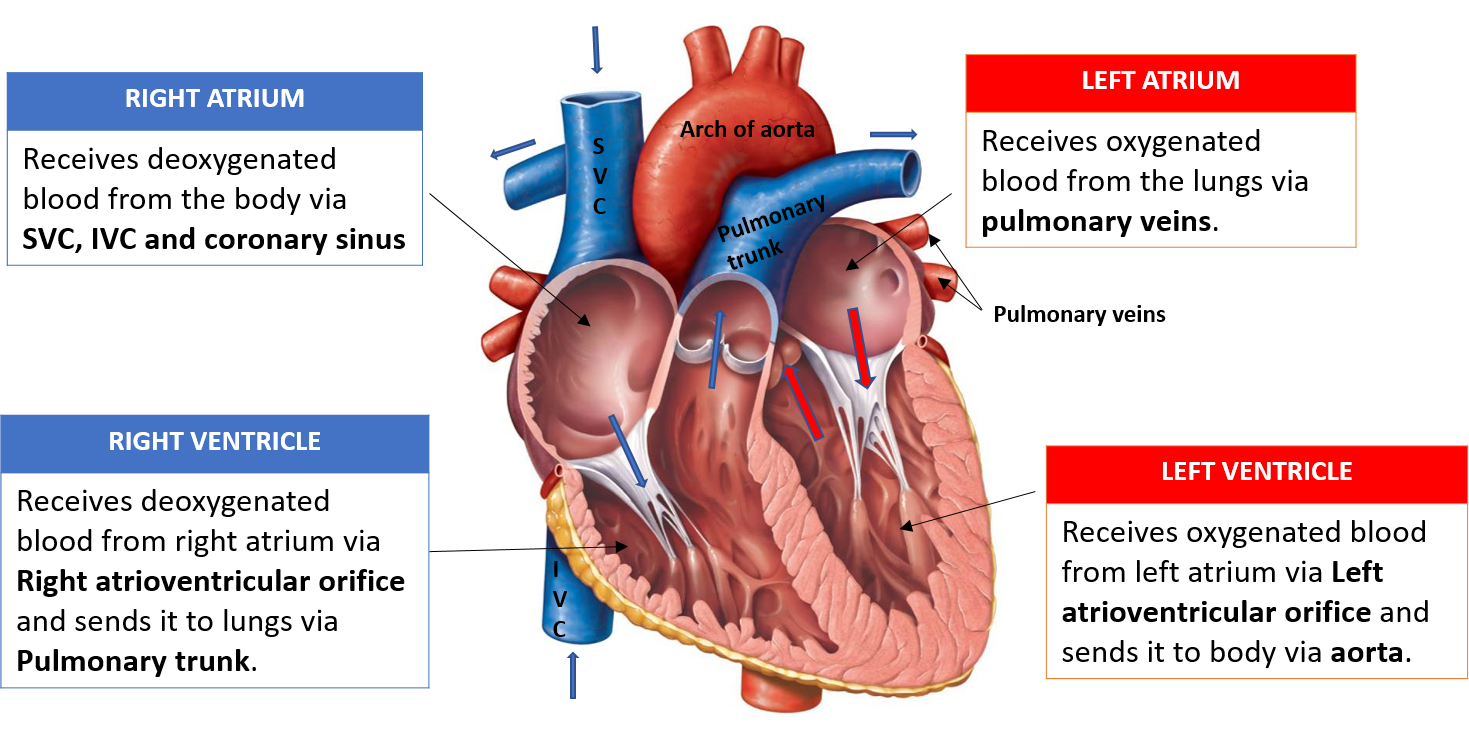
Describe the internal features of right atrium.
Watch Video on right atrium [CLICK HERE]
The interior of the right atrium is divided into 2 parts:
- Smooth posterior part – It is also called sinus venarum. All the veins except anterior cardiac veins open into this part (e.g., SVC, IVC, coronary sinus, and venae cordis minimae)
- Rough anterior part – It presents number of muscular ridges, the musculi pectinati which arise from the crista terminalis and run forwards towards the auricle.
- The two parts are separated from each other by crista terminallis.
- The interior of right atrium also presents septal wall of the right atrium which has a shallow depression. fossa ovalis. Fossa ovalis:
- is a shallow oval depression in the lower part of the interatrial septum.
- marks the site of the foramen ovale, an opening in the interatrial septum of the fetal heart
- represents septum primum
- limbus fossa ovalis (free edge of septum secundum) forms the margins of fossa ovalis except inferiorly.
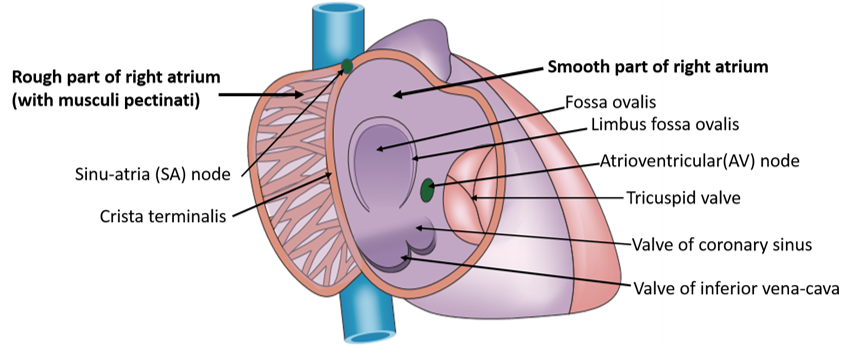
Enumerate the veins opening into the right atrium.
Following veins open into the right atrium:
- Superior vena cava
- Inferior vena cava
- Coronary sinus
- Anterior cardiac veins
- Venae cordis minimae (Thebesian veins)
Describe the right atrioventricular orifice and tricuspid valve complex.
Right atrioventricular orifice
- Is the opening between right atrium and ventricle.
- Is elliptical in shape and about 3cm wide.
- Is guarded by tricuspid valve.
Tricuspid valve complex
- It guards the right atrioventricular orifice.
- The complex includes:
- Tricuspid annulus ( a collagenous ring to which the base of cusps are attached)
- Three cusps :anterior, posterior and septal.
- Chordae tendinae: Endothelial covered collagenous threads that connect the apical 1/3rd of the papillary muscles to the free margins and ventricular surface of the tricuspid valve complex.
- Papillary muscles: are conical-shaped muscles , their base is attached to the walls of the ventricles and apex provide attachment to chordate tendinae. Right ventricle has three papillary muscles:
- Anterior
- Posterior
- Septal
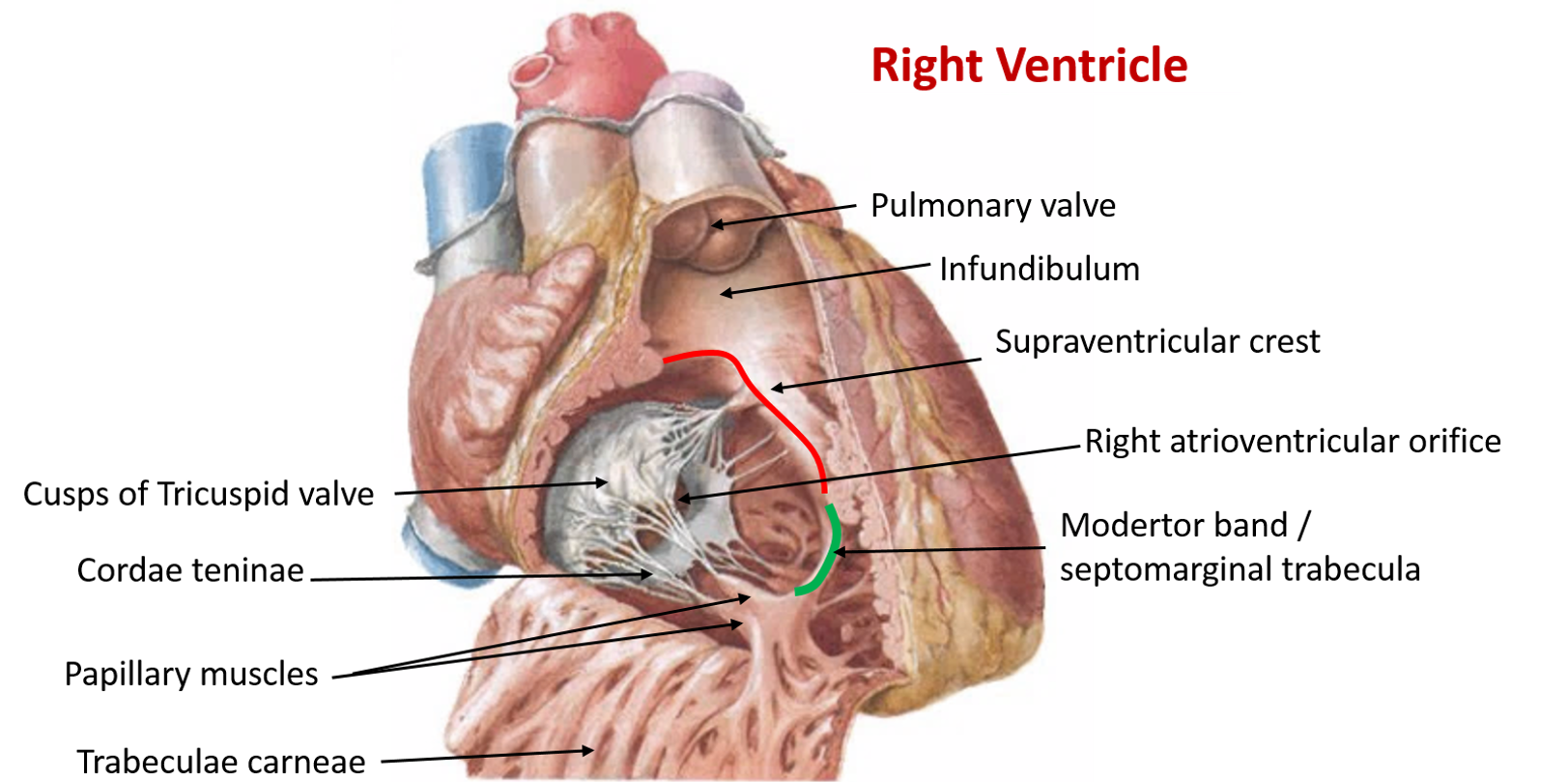
What is moderator band or septomarginal trabecula?
- It is a specialized trabecula in the right ventricle that extends from the right side of the ventricular septum to the base of the anterior papillary muscle.
- It carries the right branch of bundle of His.
- It ensures the closure of right atrioventricular orifice before the systole so that there is no regurgitation of blood into the right atrium
- It prevents over distension of right ventricle.
What are the differences between the right and left ventricle.
Right Ventricle Left ventricle The walls are thinner The walls are 3 times thicker In TS – the cavity is cresenteric shape In TS – the cavity is oval shaped Trabeulae carneae are coarse and few Trabeulae carneae are fine and numerous Has three papillary muscles Has 2 papillary muscles Chordae tendinae are few and short Chordae tindinae ar more and long Atrioventricular orifice is guarded by tricuspid valve Atrioventricular orifice is guarded by bicuspid valve Inlet and outlet lie at obtuse angles Inlet and outlet lie at acute angle
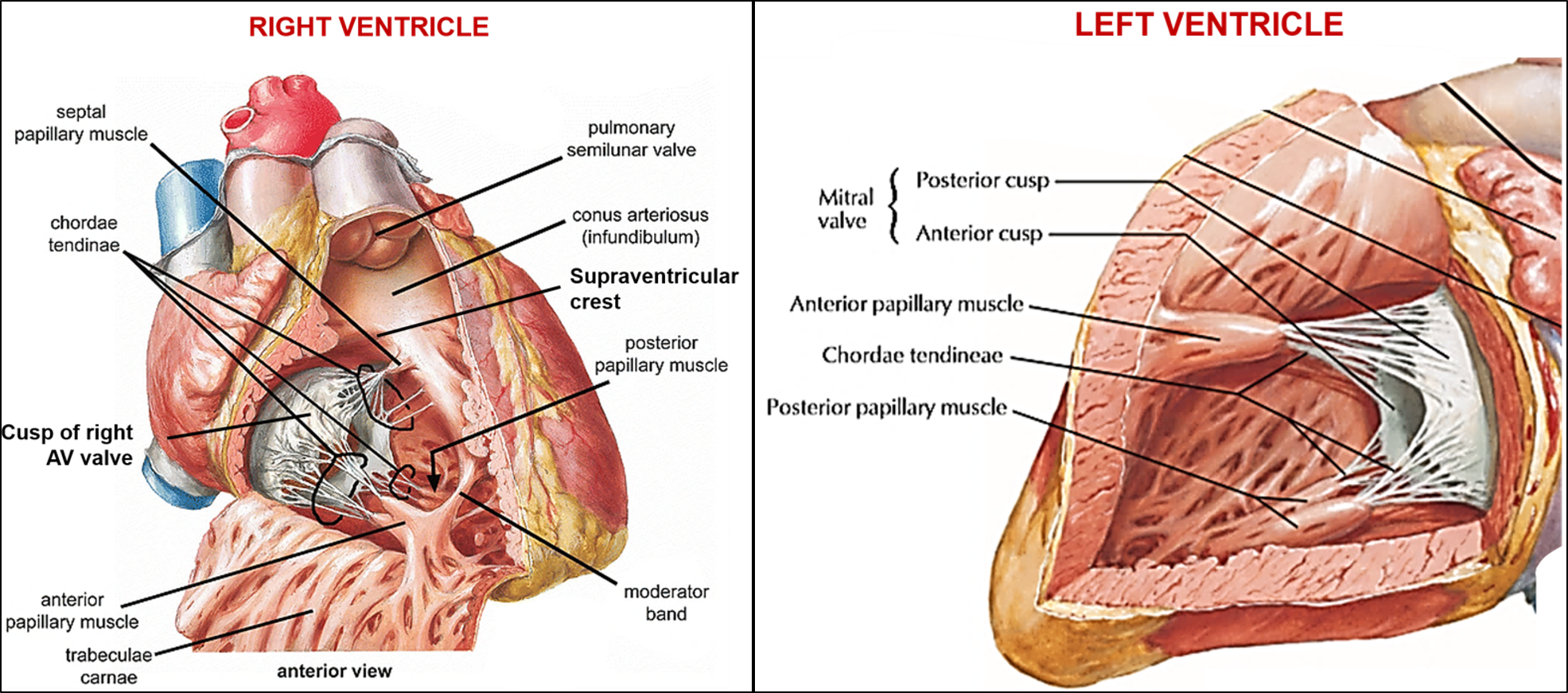
Applied Aspect
Fallot’s tetrology
Is a congenital heart anomaly which involves four anatomical abnormalities.
It is the most common cyanotic defect, and the most common cause of blue baby syndrome. The aorta and pulmonary artery develop from the truncus arteriosus which is divided by a spiral septum. The spiral septum separates the aorta and pulmonary artery and it grows down and attaches to the ventricular septum. However, if the spiral septum deviates towards the right side, following will happen:
- opening to the pulmonary would be small
- opening to the aorta would be large
- spiral septum would not come in contact with the ventricular septum
As a result the following four defects will be present:
- Pulmonary stenosis
- Overriding aorta over the ventricular septal defect
- Ventricular septal defect
- Right ventricular hypertrophy
Right ventricular hypertrophy is a compensatory result due to pulmonary stenosis. As right ventricle has to work extra hard to pump blood into the pulmonary trunk, therefore it is hypertrophied.
